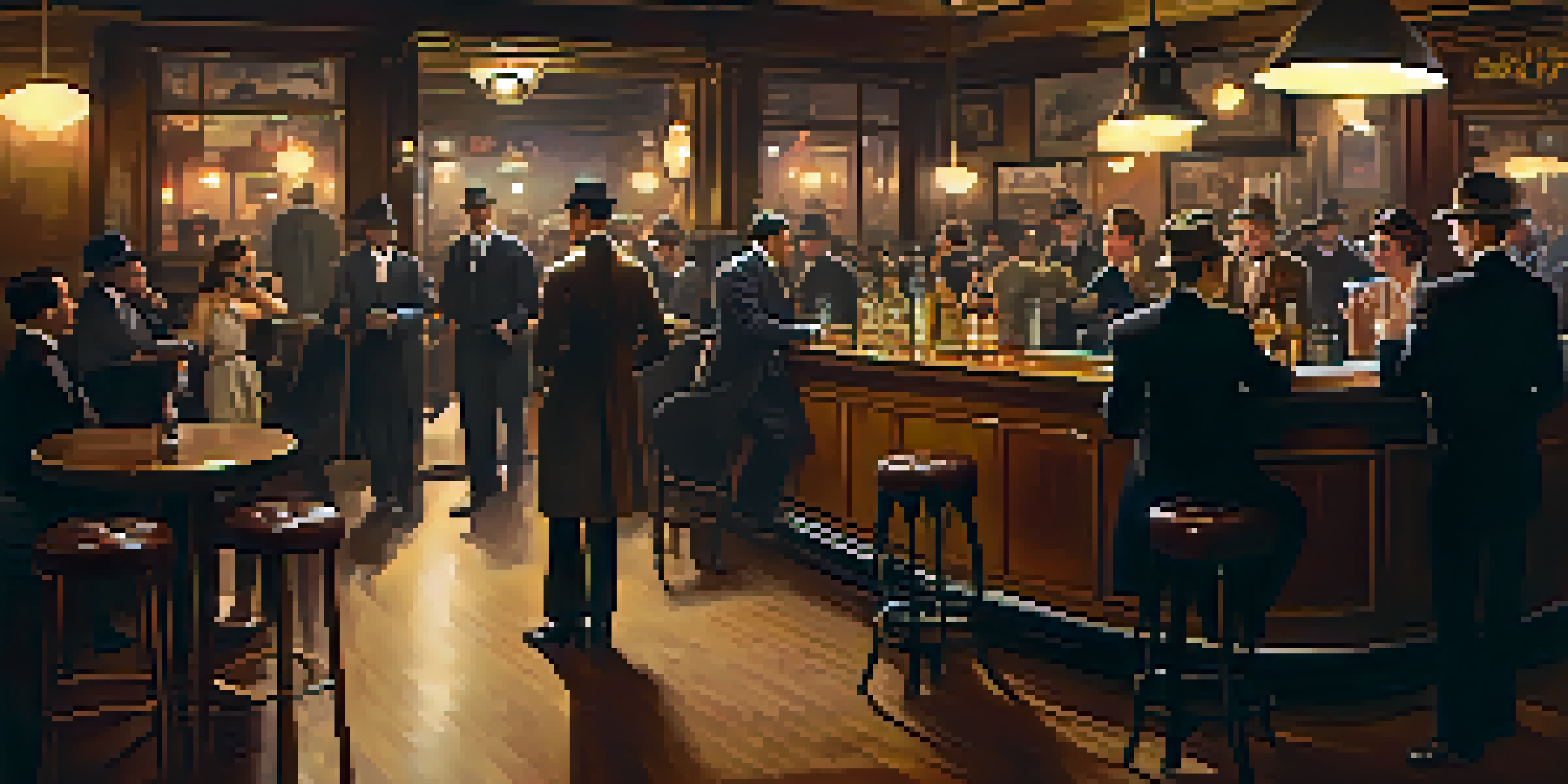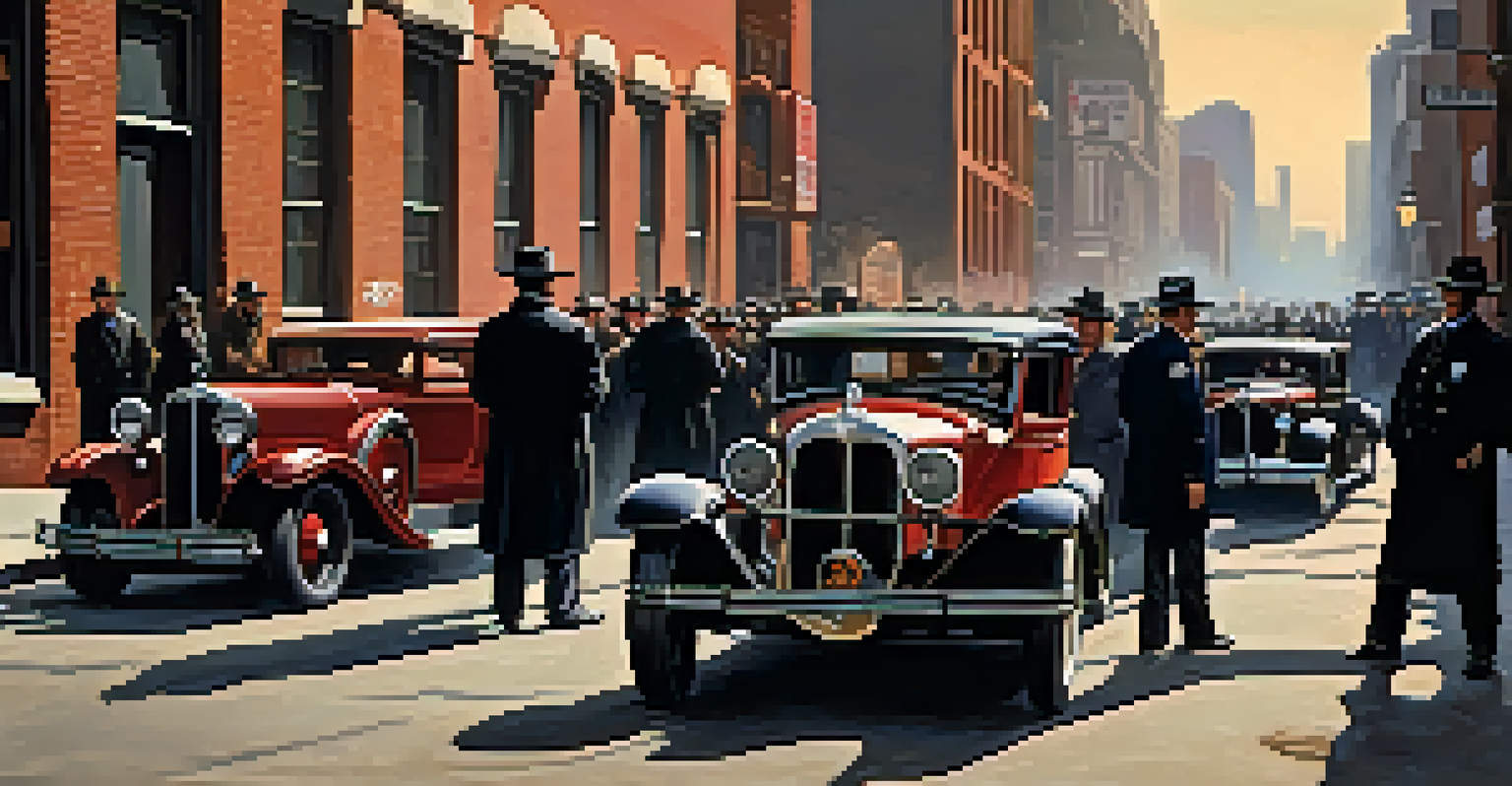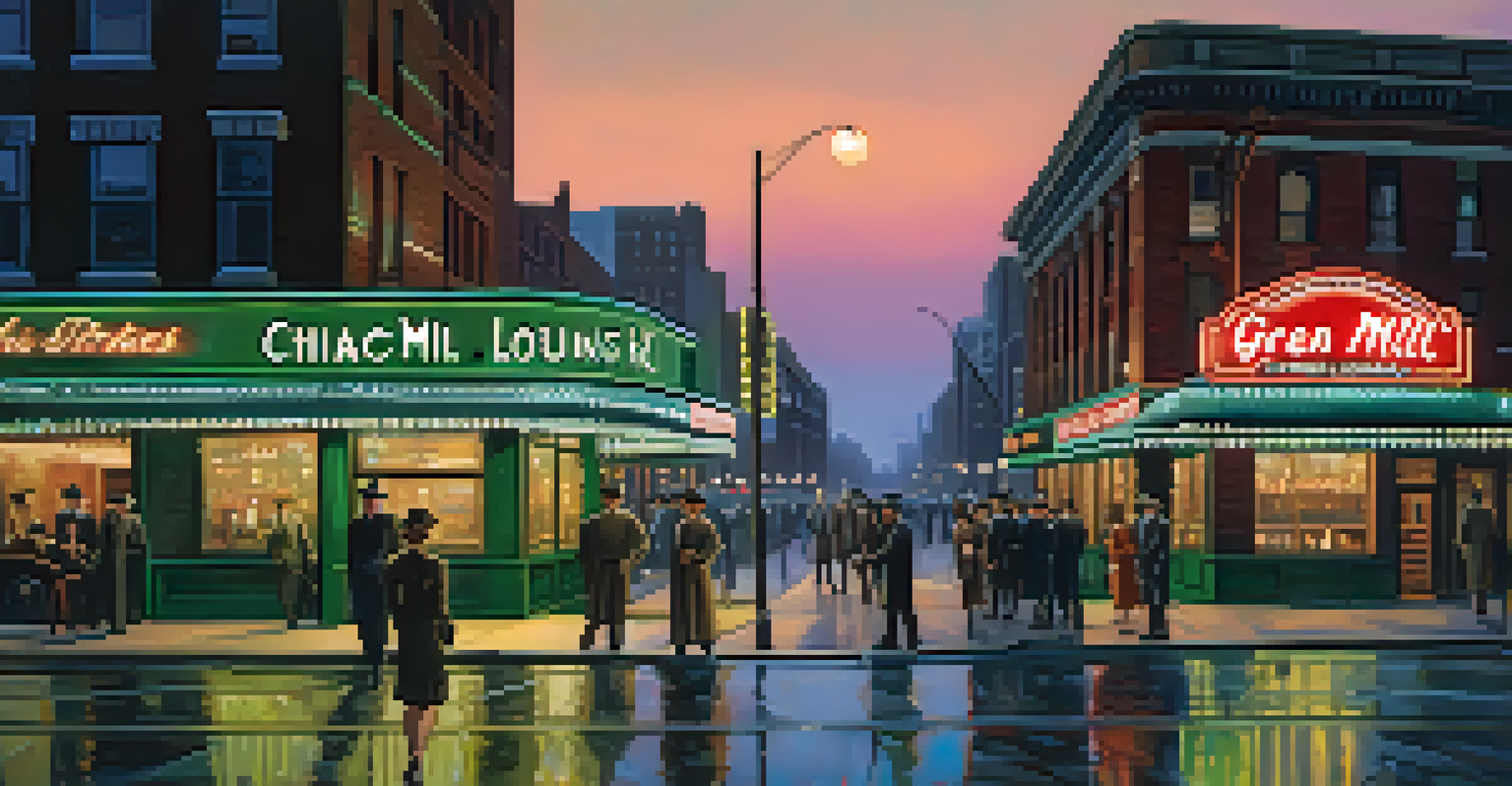Chicago's Gangster Era: Tours Uncovering Notorious Stories

The Rise of Chicago's Gangster Era: A Historical Overview
In the early 20th century, Chicago became a hub for organized crime, driven by Prohibition. Speakeasies and underground bars flourished, creating a perfect storm for gangsters like Al Capone to rise to power. This era wasn't just about crime; it reflected the social and economic struggles of the time.
In Chicago, the gangsters ruled the streets, but they also shaped the culture and the law of the city.
As gangsters battled for control over illegal activities, a complex web of alliances and betrayals developed. Not only did these criminals shape the city’s nightlife, but they also influenced politics and law enforcement. The stories from this time reveal a gritty yet fascinating chapter of American history.
Today, many tours focus on this rich history, offering a glimpse into the lives of the infamous gangsters. Visitors can walk through the same streets where these events unfolded, making history feel tangible and real. It’s a chance to connect with the past in a way that textbooks often fail to capture.
Iconic Gangsters: Who Were the Key Players?
When discussing Chicago's gangster era, one cannot overlook Al Capone. His reign during the 1920s elevated him to a near-mythical status, and his story is a staple on many tours. Capone's ability to blend charm with ruthlessness made him a key figure in both crime and popular culture.

Other notable gangsters include Johnny Torrio, who was instrumental in establishing the foundation of organized crime in Chicago. His mentorship of Capone set the stage for a new era of gang warfare. Each gangster brought their unique flair and tactics, contributing to the city's notorious reputation.
Prohibition Fueled Organized Crime
The introduction of Prohibition in the 1920s created a lucrative market for illegal alcohol, leading to a surge in organized crime and violence in Chicago.
These tours often highlight the lives of these figures through stories, photographs, and locations tied to their legacies. Participants can gain insight into their strategies and rivalries, making it a captivating learning experience. This exploration of infamous personalities adds depth to the historical narrative.
Famous Locations: Where History Comes Alive
Chicago is dotted with historical sites tied to its gangster past, making these locations popular stops on tours. From the Green Mill Cocktail Lounge, once a favorite haunt of Capone, to the site of the St. Valentine's Day Massacre, each spot tells a story. Visiting these places allows participants to visualize the events that unfolded there.
The history of organized crime is not just about the criminals; it’s about the society that created them.
Many tours also include stops at former speakeasies, providing a glimpse into the nightlife that thrived during Prohibition. These hidden gems offer a sense of mystery and excitement, allowing visitors to immerse themselves in the era's atmosphere. It's like stepping back in time, where secrets linger in the air.
The combination of storytelling and historical context transforms these locations into living museums. Tour guides often share anecdotes that bring the past to life, enhancing the overall experience. This connection to the physical spaces adds an unforgettable layer to the understanding of Chicago’s gangster lore.
The Impact of Prohibition on Gangster Activity
Prohibition was a game-changer for organized crime in Chicago, creating a lucrative market for illegal alcohol. As the 18th Amendment took effect, gangsters seized the opportunity, leading to an explosion of speakeasies and bootlegging operations. This period marked a shift where crime became a business, complete with distribution networks and fierce competition.
The resulting violence among rival gangs often spilled into the streets, making headlines across the nation. Shootouts and mob wars painted a dangerous picture of Chicago, capturing the public's fascination. Tours today often recount these dramatic events, emphasizing the chaos and lawlessness of the time.
Key Figures Shaped Gangster Lore
Prominent gangsters like Al Capone and Johnny Torrio played pivotal roles in establishing the notorious reputation of Chicago's criminal underworld.
Understanding Prohibition's role helps contextualize the behaviors and strategies of gangsters. By examining how they adapted to the law, visitors can appreciate the ingenuity behind their operations. It's a reminder of how legislation can shape not just society, but also the criminal underworld.
Notorious Events: The St. Valentine's Day Massacre
One of the most infamous events in Chicago's gangster history is the St. Valentine's Day Massacre of 1929. This brutal incident involved the murder of seven members of the North Side Gang, allegedly orchestrated by Capone’s men. The shocking nature of the crime captivated the nation and remains a focal point in gangster tours.
Guided tours often provide vivid accounts of the massacre, detailing the events leading up to the fateful day. Tourists can visit the site where it occurred, allowing them to visualize the horror that took place. This connection to real-life events creates an emotional impact that resonates with participants.
The massacre marked a turning point in the public perception of organized crime. It exposed the violent reality behind the glamorous façade and led to increased law enforcement efforts. Today, it serves as a cautionary tale about the consequences of unchecked power and ambition.
Pop Culture Influence: Gangsters in Film and Literature
Chicago's gangster era has left an indelible mark on popular culture, inspiring countless films, books, and songs. From classic movies like 'The Untouchables' to modern interpretations, these stories continue to resonate with audiences. The romanticized depiction of gangsters often blurs the lines between heroism and villainy.
Many tours incorporate elements of pop culture to engage participants, discussing how these stories have evolved over time. They may highlight famous films shot in Chicago or books that delve into the lives of infamous gangsters. This blend of history and entertainment keeps the narrative fresh and relatable.
Historical Tours Bring Past to Life
Today’s tours of Chicago’s gangster history allow visitors to explore iconic locations and understand the complex narratives of crime and culture.
By exploring the cultural impact of the gangster era, visitors can see how these figures have shaped societal narratives. The fascination with gangsters speaks to a deeper human interest in power, rebellion, and the pursuit of the American Dream. It's a conversation starter that connects history with modern interpretations.
Modern Perspectives: Learning from the Gangster Era
Today, the legacy of Chicago's gangster era offers valuable lessons about crime, society, and governance. Understanding the motivations behind organized crime can inform current discussions about justice and public policy. Tours often encourage participants to reflect on how history informs contemporary issues.
By examining the complex dynamics of power and corruption, visitors can gain insights into the human condition. The stories of resilience and downfall serve as cautionary tales that resonate across generations. This exploration fosters a deeper understanding of societal challenges that persist today.

Ultimately, these tours aim to educate and provoke thought, making history relevant in our lives. By learning from the past, we can better navigate the present, ensuring that the stories of Chicago's gangsters remain part of our cultural conversation. It's a reminder that history is not just about what happened, but how it continues to shape us.